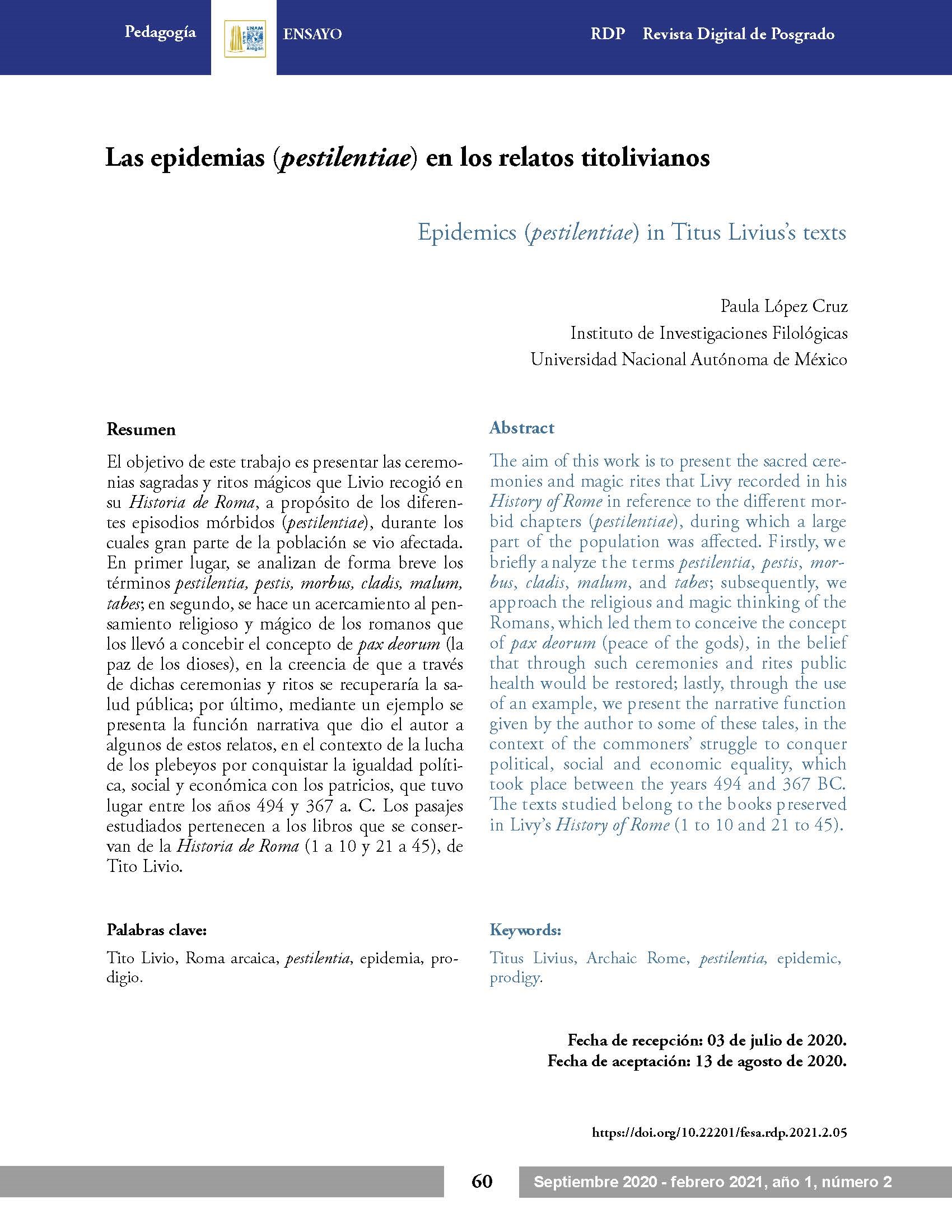Epidemics (pestilentiae) in Titus Livius’s texts
DOI:
https://doi.org/10.22201/fesa.rdp.2021.2.05Keywords:
Titus Livius, Archaic Rome, pestilentia, epidemic, prodigyAbstract
The aim of this work is to present the sacred ceremonies and magic rites that Livy recorded in his History of Rome in reference to the different morbid chapters (pestilentiae), during which a large part of the population was affected. Firstly, we briefly analyze the terms pestilentia, pestis, morbus, cladis, malum, and tabes; subsequently, we approach the religious and magic thinking of the Romans, which led them to conceive the concept of pax deorum (peace of the gods), in the belief that through such ceremonies and rites public health would be restored; lastly, through the use of an example, we present the narrative function given by the author to some of these tales, in the context of the commoners’ struggle to conquer political, social and economic equality, which took place between the years 494 and 367 BC. The texts studied belong to the books preserved in Livy’s History of Rome (1 to 10 and 21 to 45).

Downloads
Published
How to Cite
Issue
Section
License

This work is licensed under a Creative Commons Attribution-NonCommercial-NoDerivatives 4.0 International License.




